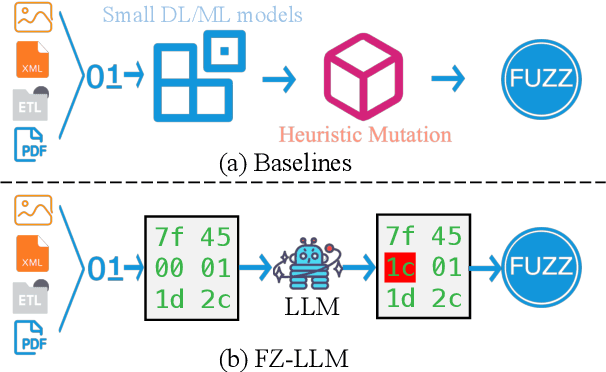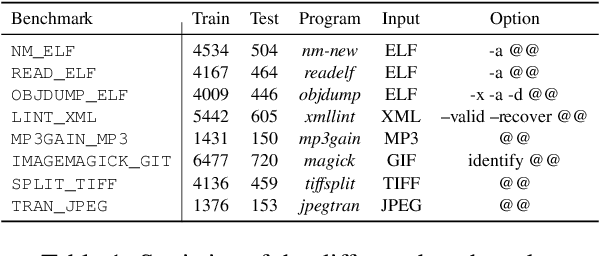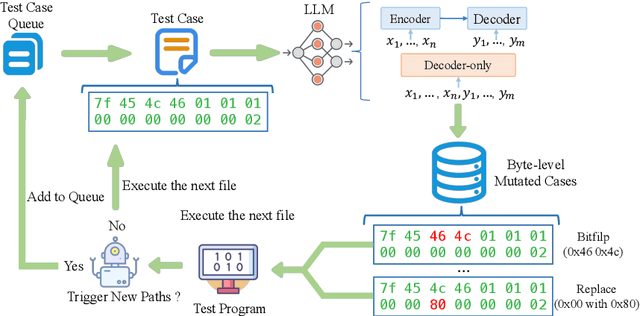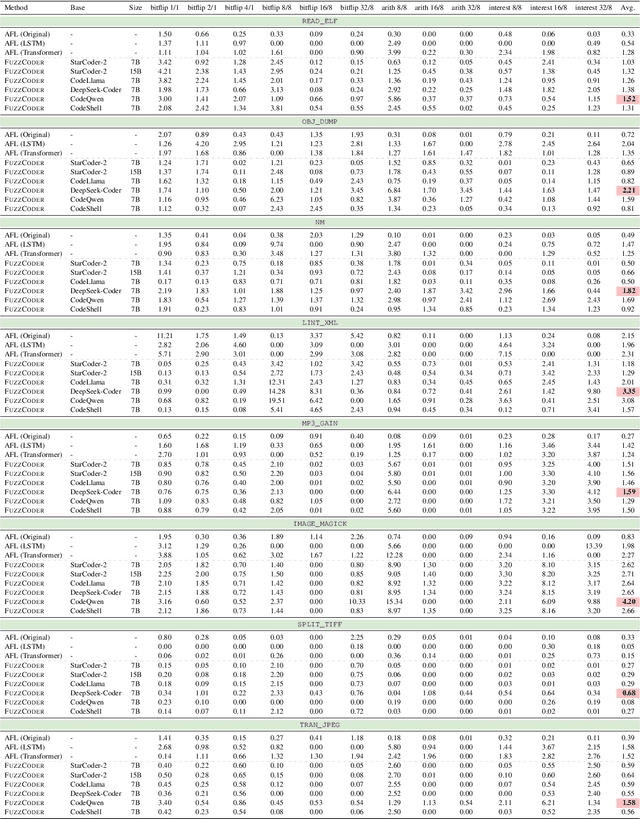Shun Zhang
Jack
Cluster-Driven Expert Pruning for Mixture-of-Experts Large Language Models
Apr 10, 2025Abstract:Mixture-of-Experts (MoE) architectures have emerged as a promising paradigm for scaling large language models (LLMs) with sparse activation of task-specific experts. Despite their computational efficiency during inference, the massive overall parameter footprint of MoE models (e.g., GPT-4) introduces critical challenges for practical deployment. Current pruning approaches often fail to address two inherent characteristics of MoE systems: 1).intra-layer expert homogeneity where experts within the same MoE layer exhibit functional redundancy, and 2). inter-layer similarity patterns where deeper layers tend to contain progressively more homogeneous experts. To tackle these issues, we propose Cluster-driven Expert Pruning (C-Prune), a novel two-stage framework for adaptive task-specific compression of MoE LLMs. C-Prune operates through layer-wise expert clustering, which groups functionally similar experts within each MoE layer using parameter similarity metrics, followed by global cluster pruning, which eliminates redundant clusters across all layers through a unified importance scoring mechanism that accounts for cross-layer homogeneity. We validate C-Prune through extensive experiments on multiple MoE models and benchmarks. The results demonstrate that C-Prune effectively reduces model size while outperforming existing MoE pruning methods.
Dynamic Dictionary Learning for Remote Sensing Image Segmentation
Mar 09, 2025Abstract:Remote sensing image segmentation faces persistent challenges in distinguishing morphologically similar categories and adapting to diverse scene variations. While existing methods rely on implicit representation learning paradigms, they often fail to dynamically adjust semantic embeddings according to contextual cues, leading to suboptimal performance in fine-grained scenarios such as cloud thickness differentiation. This work introduces a dynamic dictionary learning framework that explicitly models class ID embeddings through iterative refinement. The core contribution lies in a novel dictionary construction mechanism, where class-aware semantic embeddings are progressively updated via multi-stage alternating cross-attention querying between image features and dictionary embeddings. This process enables adaptive representation learning tailored to input-specific characteristics, effectively resolving ambiguities in intra-class heterogeneity and inter-class homogeneity. To further enhance discriminability, a contrastive constraint is applied to the dictionary space, ensuring compact intra-class distributions while maximizing inter-class separability. Extensive experiments across both coarse- and fine-grained datasets demonstrate consistent improvements over state-of-the-art methods, particularly in two online test benchmarks (LoveDA and UAVid). Code is available at https://anonymous.4open.science/r/D2LS-8267/.
STAR-RIS Aided Dynamic Scatterers Tracking for Integrated Sensing and Communications
Jan 07, 2025



Abstract:Integrated sensing and communication (ISAC) has become an attractive technology for future wireless networks. In this paper, we propose a simultaneous transmission and reflection reconfigurable intelligent surface (STAR-RIS) aided dynamic scatterers tracking scheme for ISAC in high mobility millimeter wave communication systems, where the STAR-RIS is employed to provide communication service for indoor user with the base station (BS) and simultaneously sense and track the interested outdoor dynamic scatterers. Specifically, we resort to an active STAR-RIS to respectively receive and further deal with the impinging signal from its double sides at the same time. Then, we develop a transmission strategy with the activation scheme of the STAR-RIS elements, and construct the signal models within the system. After acquiring the channel parameters related to the BS-RIS channel, the dynamic paths can be identified from all the scattering paths, and the dynamic targets can be classified with respect to their radar cross sections. We further track the outdoor scatterers at STAR-RIS by resorting to the Gaussian mixture-probability hypothesis density filter. With the tracked locations of the outdoor scatterers, a beam prediction strategy for both the precoder of BS and the refraction phase shift vector of STAR-RIS is developed to enhance the communication performance of the indoor user. Besides, a target mismatch detection and path collision prediction mechanism is proposed to reduce the training overhead and improve the transmission performance. Finally, the feasibility and effectiveness of our proposed STAR-RIS aided dynamic scatterers tracking scheme for ISAC are demonstrated and verified via simulation results.
Knowledge Transfer and Domain Adaptation for Fine-Grained Remote Sensing Image Segmentation
Dec 09, 2024



Abstract:Fine-grained remote sensing image segmentation is essential for accurately identifying detailed objects in remote sensing images. Recently, vision transformer models (VTM) pretrained on large-scale datasets have shown strong zero-shot generalization, indicating that they have learned the general knowledge of object understanding. We introduce a novel end-to-end learning paradigm combining knowledge guidance with domain refinement to enhance performance. We present two key components: the Feature Alignment Module (FAM) and the Feature Modulation Module (FMM). FAM aligns features from a CNN-based backbone with those from the pretrained VTM's encoder using channel transformation and spatial interpolation, and transfers knowledge via KL divergence and L2 normalization constraint. FMM further adapts the knowledge to the specific domain to address domain shift. We also introduce a fine-grained grass segmentation dataset and demonstrate, through experiments on two datasets, that our method achieves a significant improvement of 2.57 mIoU on the grass dataset and 3.73 mIoU on the cloud dataset. The results highlight the potential of combining knowledge transfer and domain adaptation to overcome domain-related challenges and data limitations. The project page is available at https://xavierjiezou.github.io/KTDA/.
Adapting Vision Foundation Models for Robust Cloud Segmentation in Remote Sensing Images
Nov 20, 2024



Abstract:Cloud segmentation is a critical challenge in remote sensing image interpretation, as its accuracy directly impacts the effectiveness of subsequent data processing and analysis. Recently, vision foundation models (VFM) have demonstrated powerful generalization capabilities across various visual tasks. In this paper, we present a parameter-efficient adaptive approach, termed Cloud-Adapter, designed to enhance the accuracy and robustness of cloud segmentation. Our method leverages a VFM pretrained on general domain data, which remains frozen, eliminating the need for additional training. Cloud-Adapter incorporates a lightweight spatial perception module that initially utilizes a convolutional neural network (ConvNet) to extract dense spatial representations. These multi-scale features are then aggregated and serve as contextual inputs to an adapting module, which modulates the frozen transformer layers within the VFM. Experimental results demonstrate that the Cloud-Adapter approach, utilizing only 0.6% of the trainable parameters of the frozen backbone, achieves substantial performance gains. Cloud-Adapter consistently attains state-of-the-art (SOTA) performance across a wide variety of cloud segmentation datasets from multiple satellite sources, sensor series, data processing levels, land cover scenarios, and annotation granularities. We have released the source code and pretrained models at https://github.com/XavierJiezou/Cloud-Adapter to support further research.
Get Large Language Models Ready to Speak: A Late-fusion Approach for Speech Generation
Oct 27, 2024Abstract:Large language models (LLMs) have revolutionized natural language processing (NLP) with impressive performance across various text-based tasks. However, the extension of text-dominant LLMs to with speech generation tasks remains under-explored. In this work, we introduce a text-to-speech (TTS) system powered by a fine-tuned Llama model, named TTS-Llama, that achieves state-of-the-art speech synthesis performance. Building on TTS-Llama, we further propose MoLE-Llama, a text-and-speech multimodal LLM developed through purely late-fusion parameter-efficient fine-tuning (PEFT) and a mixture-of-expert architecture. Extensive empirical results demonstrate MoLE-Llama's competitive performance on both text-only question-answering (QA) and TTS tasks, mitigating catastrophic forgetting issue in either modality. Finally, we further explore MoLE-Llama in text-in-speech-out QA tasks, demonstrating its great potential as a multimodal dialog system capable of speech generation.
Enhancing Data Quality through Self-learning on Imbalanced Financial Risk Data
Sep 15, 2024Abstract:In the financial risk domain, particularly in credit default prediction and fraud detection, accurate identification of high-risk class instances is paramount, as their occurrence can have significant economic implications. Although machine learning models have gained widespread adoption for risk prediction, their performance is often hindered by the scarcity and diversity of high-quality data. This limitation stems from factors in datasets such as small risk sample sizes, high labeling costs, and severe class imbalance, which impede the models' ability to learn effectively and accurately forecast critical events. This study investigates data pre-processing techniques to enhance existing financial risk datasets by introducing TriEnhance, a straightforward technique that entails: (1) generating synthetic samples specifically tailored to the minority class, (2) filtering using binary feedback to refine samples, and (3) self-learning with pseudo-labels. Our experiments across six benchmark datasets reveal the efficacy of TriEnhance, with a notable focus on improving minority class calibration, a key factor for developing more robust financial risk prediction systems.
FuzzCoder: Byte-level Fuzzing Test via Large Language Model
Sep 03, 2024



Abstract:Fuzzing is an important dynamic program analysis technique designed for finding vulnerabilities in complex software. Fuzzing involves presenting a target program with crafted malicious input to cause crashes, buffer overflows, memory errors, and exceptions. Crafting malicious inputs in an efficient manner is a difficult open problem and the best approaches often apply uniform random mutations to pre-existing valid inputs. In this work, we propose to adopt fine-tuned large language models (FuzzCoder) to learn patterns in the input files from successful attacks to guide future fuzzing explorations. Specifically, we develop a framework to leverage the code LLMs to guide the mutation process of inputs in fuzzing. The mutation process is formulated as the sequence-to-sequence modeling, where LLM receives a sequence of bytes and then outputs the mutated byte sequence. FuzzCoder is fine-tuned on the created instruction dataset (Fuzz-Instruct), where the successful fuzzing history is collected from the heuristic fuzzing tool. FuzzCoder can predict mutation locations and strategies locations in input files to trigger abnormal behaviors of the program. Experimental results show that FuzzCoder based on AFL (American Fuzzy Lop) gain significant improvements in terms of effective proportion of mutation (EPM) and number of crashes (NC) for various input formats including ELF, JPG, MP3, and XML.
The Llama 3 Herd of Models
Jul 31, 2024Abstract:Modern artificial intelligence (AI) systems are powered by foundation models. This paper presents a new set of foundation models, called Llama 3. It is a herd of language models that natively support multilinguality, coding, reasoning, and tool usage. Our largest model is a dense Transformer with 405B parameters and a context window of up to 128K tokens. This paper presents an extensive empirical evaluation of Llama 3. We find that Llama 3 delivers comparable quality to leading language models such as GPT-4 on a plethora of tasks. We publicly release Llama 3, including pre-trained and post-trained versions of the 405B parameter language model and our Llama Guard 3 model for input and output safety. The paper also presents the results of experiments in which we integrate image, video, and speech capabilities into Llama 3 via a compositional approach. We observe this approach performs competitively with the state-of-the-art on image, video, and speech recognition tasks. The resulting models are not yet being broadly released as they are still under development.
MaTrRec: Uniting Mamba and Transformer for Sequential Recommendation
Jul 27, 2024Abstract:Sequential recommendation systems aim to provide personalized recommendations by analyzing dynamic preferences and dependencies within user behavior sequences. Recently, Transformer models can effectively capture user preferences. However, their quadratic computational complexity limits recommendation performance on long interaction sequence data. Inspired by the State Space Model (SSM)representative model, Mamba, which efficiently captures user preferences in long interaction sequences with linear complexity, we find that Mamba's recommendation effectiveness is limited in short interaction sequences, with failing to recall items of actual interest to users and exacerbating the data sparsity cold start problem. To address this issue, we innovatively propose a new model, MaTrRec, which combines the strengths of Mamba and Transformer. This model fully leverages Mamba's advantages in handling long-term dependencies and Transformer's global attention advantages in short-term dependencies, thereby enhances predictive capabilities on both long and short interaction sequence datasets while balancing model efficiency. Notably, our model significantly improves the data sparsity cold start problem, with an improvement of up to 33% on the highly sparse Amazon Musical Instruments dataset. We conducted extensive experimental evaluations on five widely used public datasets. The experimental results show that our model outperforms the current state-of-the-art sequential recommendation models on all five datasets. The code is available at https://github.com/Unintelligentmumu/MaTrRec.
 Add to Chrome
Add to Chrome Add to Firefox
Add to Firefox Add to Edge
Add to Edge